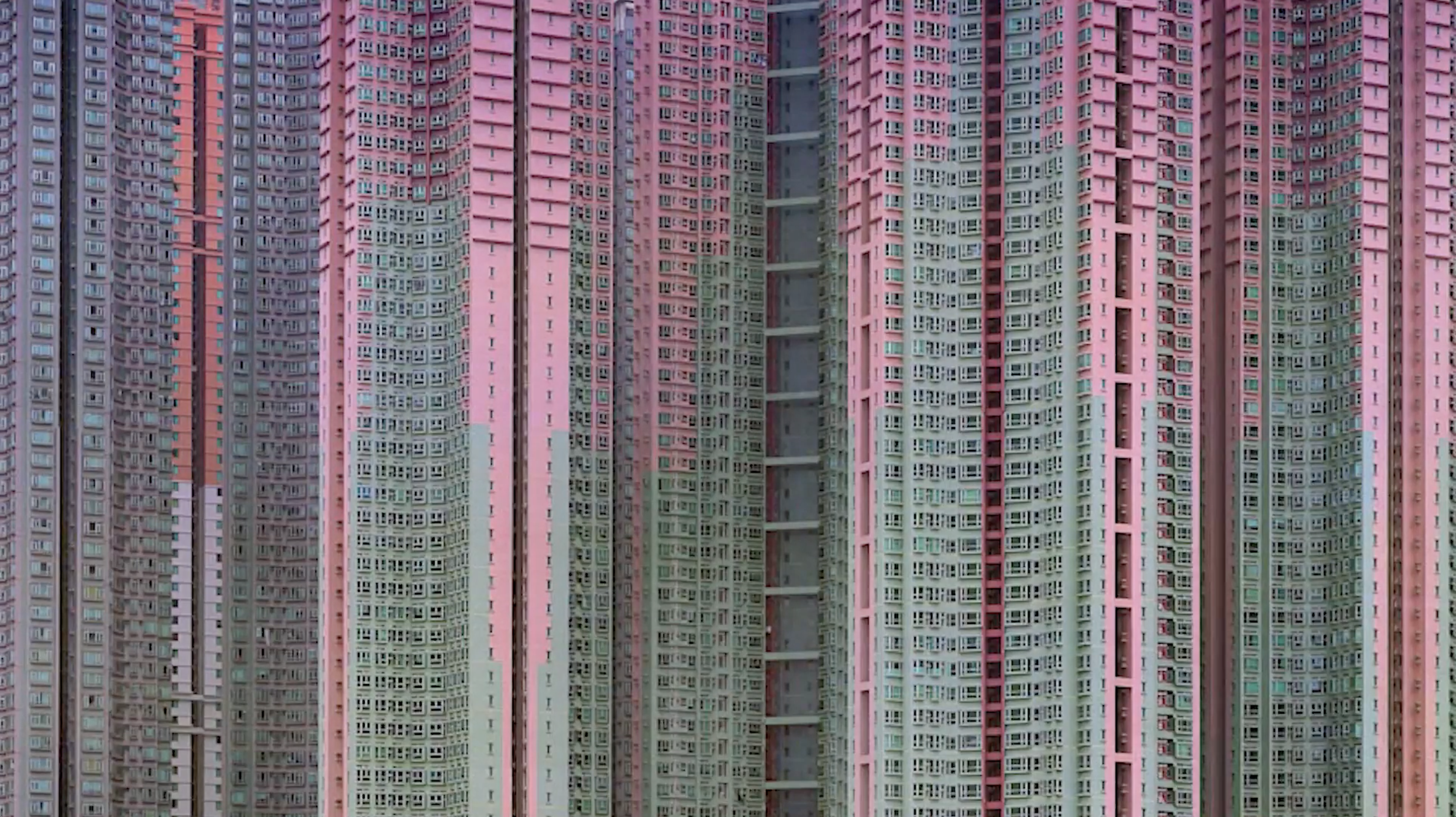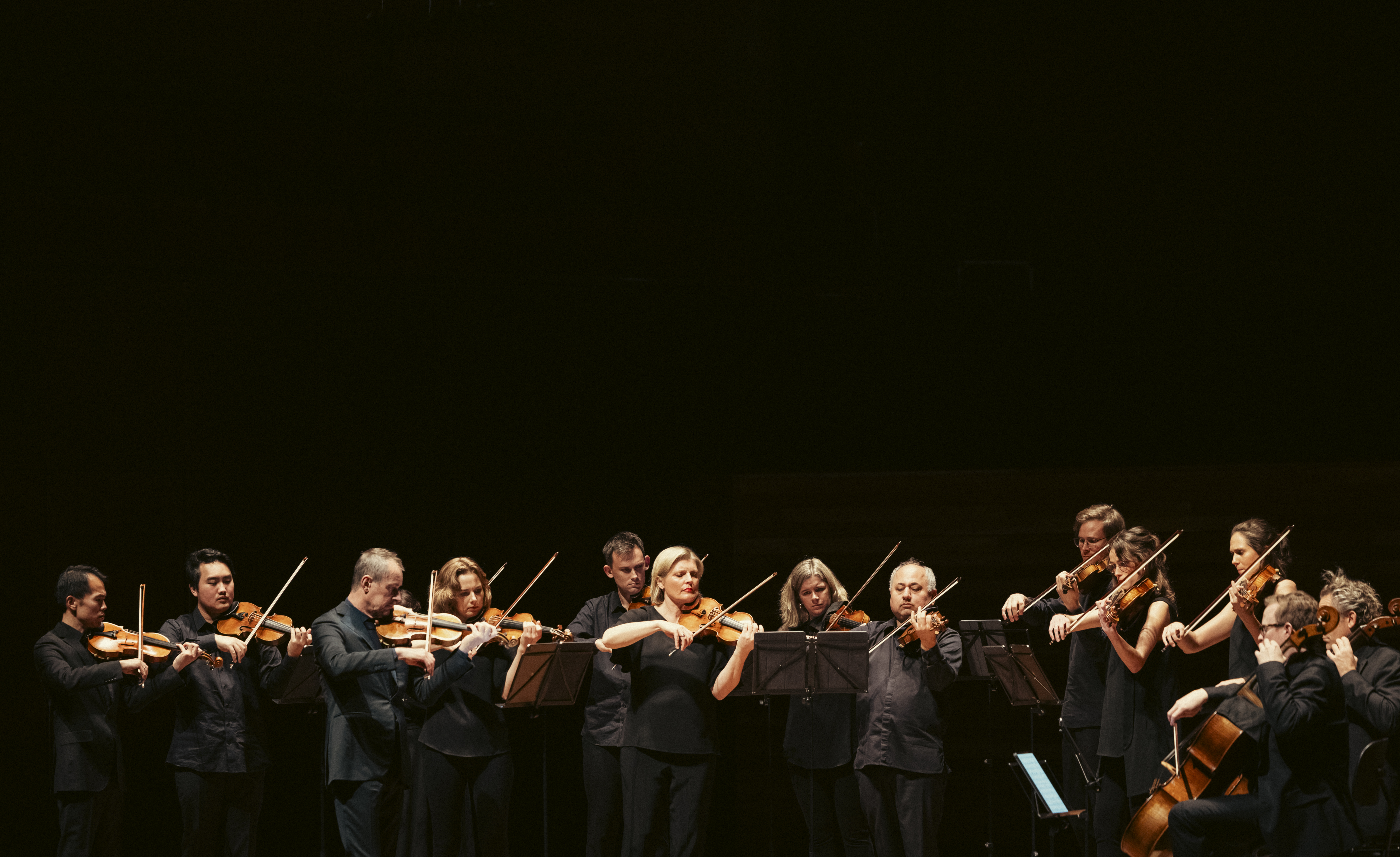
Overture
Allegro moderato from Symphony No.8 in B minor “Unfinished” by Franz Schubert (arr. Tognetti)
In the words of William Shakespeare, “All the world’s a stage, and all the men and women merely players”. To this play of life and death set to film, the first movement of Franz Schubert’s Unfinished Symphony serves as Overture. In one of the most remarkable and original orchestral compositions in the Western canon, Schubert encapsulates every aspect of human existence, from chilling uncertainty and violent terror, to the most sublime expressions of joy, warmth and love.
Space
eKstasis by Richard Tognetti
We begin in darkness. A solo violin conjures up our planet from deep space before the music – and the world along with it – expands. As we travel towards Earth from above, billions of streetlights illuminate urbanisation weaving its way across our planet. Yann Arthus-Betrand footage reveals the curves of nature that give way to straight lines and rectangles as cities bloom across our planet and merge into megacities. Watching from above, we are detached observers of the incredible density of these spaces.
Swarm
Battle – Crowd Chorale by Richard Tognetti
Country
Krossfestingin from String Quartet No.3 “El Greco” by Jón Leifs
To some, this will seem like the loneliest place on earth. For others, who have connection to Country, the scene reflects on an integral connection to the natural world that reaches back across millennia. Filmed in the Northern Territory’s Tanami Desert, Country is a single take created by cinematographer Jon Frank, set to the music of Icelandic composer Jón Leifs. As Frank’s drone sails ever higher into the sky, we follow a solitary figure below until he is finally lost, indecipherable from the spinifex and the vast expanse of country.
Gaze
The Unanswered Question by Charles Ives
Frank’s camera moves from the seemingly endless horizons of the Australian outback to the crowded Manhattan streets. Time slows down and we gaze deep into the eyes of strangers, emotions etched across their faces. The solo trumpet in Charles Ives’ The Unanswered Question is stately and philosophical, but the overall impression is almost haunting. In this most ubiquitous of city scenes, a stark contrast to the previous chapter, we experience a very different sense of isolation.
Mela
Derek and the Far-Field Theory by Richard Tognetti
Set to Tognetti’s rhythmically dynamic reworking of the music of JS Bach, Mela reflects on pilgrimage and the ways we are drawn to celebration. Rufus Blackwell’s footage takes us to the Kumbh Mela festival in India, where millions gather to bathe in the holy water on the banks of the Ganges. We travel to the annual Hajj pilgrimage in Mecca, a Buddhist celebration in Thailand, and the Coachella Festival in the US, revelling in the colour, energy and joy of shared communion.
Football Polka
Polka by Dmitri Shostakovich
Dmitri Shostakovich was a great lover of soccer. His polka transforms familiar football scenes into a different kind of spectacle. Suddenly the players are dancers, the pitch a stage. The crowd moves as one organism; they leap to their feet in perfect unison, grieve and celebrate as one, as if an orchestra responding to the beat of a conductor’s baton.
Fan
Scene with Cranes from Kuolema by Jean Sibelius
Filmed in black and white with the intensity of a 1920’s expressionist film, Fan describes a scene of unfathomable emotion. Set to Sibelius’ Kuolema (itself written as incidental music for a tragic play), Dragan Aleksic’s camera zooms in on a single football fan. Emotions tear and distort his face, as if the most personal tragedy engulfs has soul. He is surrounded, but acutely alone.
Mosh Pit
Mosh Maggot by Richard Tognetti
Hippy Van Shady by Richard Tognetti
The beat drops and we plunge into Mosh Pit. A frenzy of male-ritualised aggression, bodies launch themselves on one another as if possessed, creating an increasingly violent whirlpool. The driving intensity of Tognetti’s music persuades us to abandon our reason, our caution, and throw ourselves amongst the turmoil.
Borders
Three Voices: Slow Waltz by Morton Feldman
The three intertwined voices of Morton Feldman’s a capella score are beguiling and beautiful, but they conjure a living nightmare. Every year, millions flee ruined homes and desperate plights, seeking refuge in new cities comprised of tarps and tents. Borders delves into humanity’s migration crisis, from the Za'atari refugee camp in Jordon, the world’s largest camp for Syrian refugees, to the Cox’s Bazar in Bangladesh, where hundreds of thousands fled devastation and brutality in Myanmar, to the beaches of Greece. The opening scenes were filmed by artist and dissident Ai Weiwei; those closing the section by photojournalist Lior Sperandeo.
Riot
Mosh Maggot by Richard Tognetti
It almost sounds like drums. The music is intense, but the imagery more so. Riot features the work of Sydney photographer Craig Greenhill, captured during one of the darkest days in Australia’s history. A crowd descends into a racist mob. The outcome is confronting: violent and devastating.
Compression
Molto adagio from String Quartet in A minor, Op.132 by Ludwig van Beethoven
Above Sunset Pass from The Wind in High Places by John Luther Adams
A strange, unearthly beauty can be found in the most populated of places. Photographer Michael Wolf captures Tokyo commuters crushed together in passing trains, viewed through the condensation of their own breath. As Beethoven gives way to contemporary American composer John Adams’ The Wind in High Places, Compression moves to explore building complexes in Hong Kong: endless boxes and lives pile high towards the heavens, patterns repeated ad infinitum, devoid of individuality. But signs of life peek through: vegetables tied to a wire fence, flowers placed in a plastic bottle, a piece of clothing snagged on a line.
Masked
Bells by Richard Tognetti
Fagurt er í Fjörðum (traditional Icelandic, arr. by Hearne)
A traditional Icelandic hymn reflects and laments a moment yet to pass. In a companion piece to Jon Frank’s footage in Gaze, we look into the eyes of passers-by through the lens of Sydney photographer John Janson-Moore, but this time faces are covered and expressions wearied with fear, of one another and a radically changed world.
Tide
Tenebrae by Osvaldo Golijov
We witness a devastating scene that is all too common; affronting in its ubiquitousness. But the horror galvanises and turns into momentum. The crowd swells from country to country, reaching Australia’s shores as we reflect on our own history and the nation we want to become. One man’s story becomes a movement.
Train
Nocturne in C-sharp minor, Op.27, No.1 by Frédéric Chopin
Jon Frank’s camera takes us on the Shinkansen. From Tokyo to Kyoto we speed past buildings, bridges, roads, signs of humanity sprawled across the landscape, drawn into a trance through Chopin’s Nocturne No.1.
The Crowd & I tours to Canberra, Melbourne, Sydney and Brisbane, 6-15 August. Click here to book tickets.
